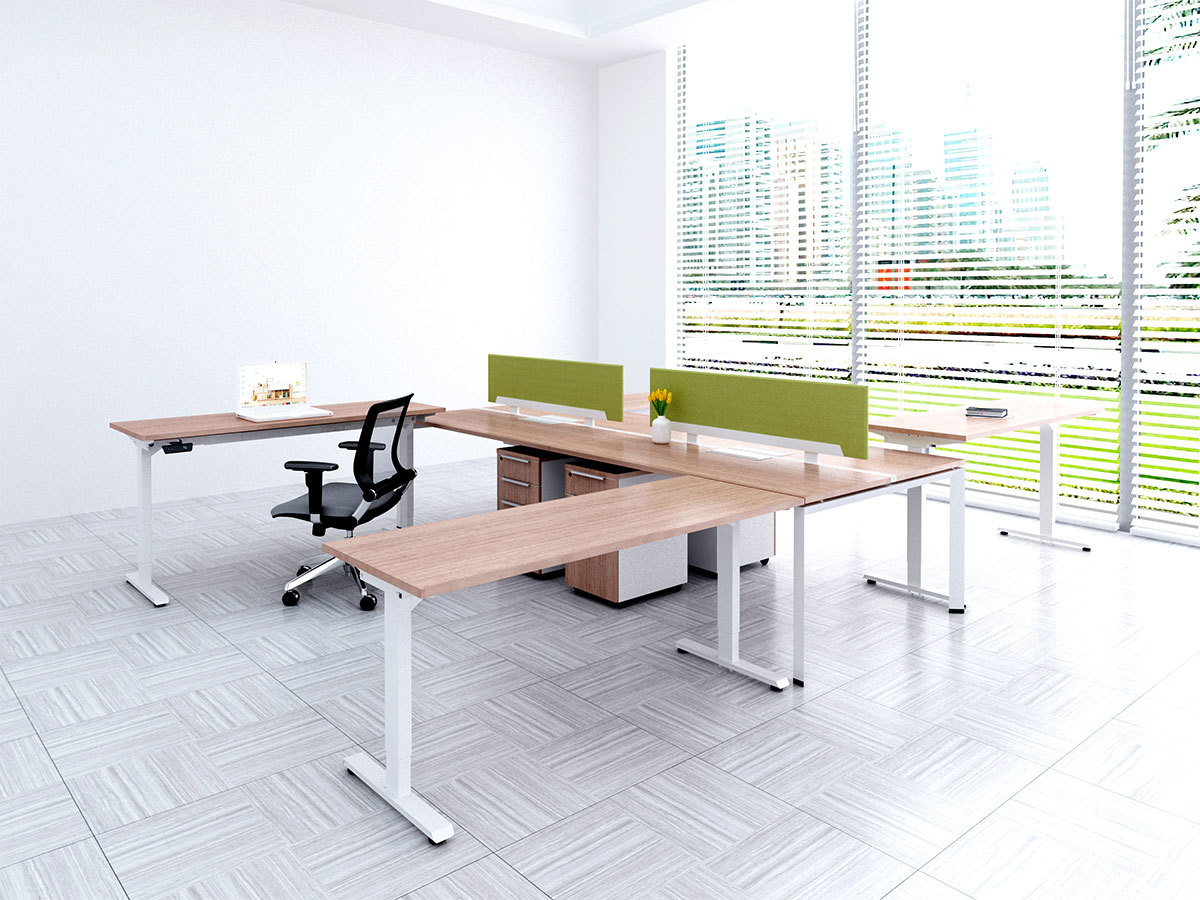6 Tips For Getting The Most Out Of Your Sit-Stand Desk
Jan 24, 2019
So you’ve decided to buy a sit-stand desk.
Figuring out how to use it is easy enough. The name itself is pretty self-explanatory. You sit, you stand, boom, sit-stand desk.
Although it’s easy to figure out how to use the desk on your own, there are measures you can take to get the most out of your purchase. Maximize the health benefits associated with sit-stand desks by following these six tips.
1. Stand On an Anti-fatigue Mat
It’s easy for your feet to grow tired and feel weary when you’re standing for hours at a time. Prevent muscle fatigue and soreness in your feet and legs by standing on an anti-fatigue mat. These mats encourage subtle movements in your leg muscles which improve your blood flow and circulation, resulting with decreased discomfort associated with prolonged standing. Studies show that people who use them for two or more hours a day experience fewer leg problems, lower back pain, tiredness, and discomfort.
2. Adjust Your Screen and Desk
Correctly positioning your screen and desk is essential if you want to experience the comfort that sit-stand desks are touted for.
Set your standing desk at elbow height and position the screen 20-28 inches away from your face. The top of the screen should be at eye level with a slight upwards tilt. This will prevent you from straining your neck by moving it up and down throughout the day to see the screen well.
3. Use Arm Supports
Arm supports are soft surface areas designed to reduce pressure on your wrists while using a mouse. Research shows that using arm supports reduces the risk of developing shoulder and neck problems. Many models are inexpensive and easily attach to your desk, making it an affordable investment towards your health.
4. Take Breaks
Although sit-stand desks are better for your health than conventional office chairs, it’s important to take breaks to get the most out of your purchase. Set a reminder on your phone or computer to prompt you to take a break if you have a hard time remembering on your own.
5. Alternate Between Standing and Sitting
Sitting for too long isn’t great for your health, but neither is standing. Being on your feet for hours strains your tendons, leg muscles, and other connective tissues. Prolonged sitting can lead to weight gain, obesity, and diabetes. The key to achieving good health with your desk is to strike a balance between sitting and standing. A ratio of 1:1, such as sitting for one hour and standing for one hour, proves to be ideal in providing the greatest health benefits, comfort, and energy levels without detrimentally impacting productivity.
6. Change Your Mouse and Keyboard Position
Working on the computer can cause muscle fatigue in the wrists. Position your keyboard and mouse at the same level and keep your wrists straight while typing to reduce the strain as much as possible. Remember to adjust your mouse and keyboard as needed each time you transition from sitting to standing.
Although the popularly of adjustable desks are on the rise, many people do not know how to use them effectively. Try out these suggestions to experience the health benefits and comfort that everyone raves about for yourself!
Conventional office desks are a thing of the past. With research indicating numerous health benefits associated with alternating between sitting and standing at work, sit-stand desks are in demand. Check out our selection to find one that works best for you.
